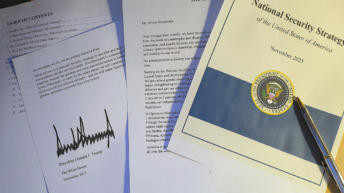
In a rapidly transforming digital media landscape, the face—or rather, the voice—of news may no longer be human. A new wave of AI-driven news anchors is making its presence felt in newsrooms across the globe, raising profound questions about how we perceive credibility, engagement, and trust in the age of artificial intelligence.
In a world increasingly shaped by artificial intelligence (AI), journalism, the traditional stronghold of human information and communication, is experiencing a quiet but profound transformation. Newsrooms are no longer solely populated by human reporters and anchors; instead, AI-generated news anchors, some eerily lifelike, are taking the stage, presenting bulletins with synthesised voices and digital avatars that mimic human behaviours, emotions, and expressions. These virtual personas, once the stuff of science fiction, are now becoming fixtures in modern broadcasting.
AI news anchors are designed not merely to read the news but to redefine it (Rothman, 2025). Armed with machine learning algorithms and natural language processing tools, they deliver stories with efficiency, consistency, and an uncanny level of emotional nuance. Some resemble humans visually and vocally, speaking with a warmth or gravity typically associated with seasoned broadcasters. Others adopt a more robotic tone, focusing purely on information dissemination. But as they enter the newsroom, they bring with them a set of complex questions: How do audiences respond to these newscasters that look and sound human but are not? Does a human-like AI voice increase the audience’s trust in the information presented? More importantly, does it influence their willingness to watch?
Newsrooms are increasingly adopting AI not only to automate content creation and curation but also to experiment with novel viewer experiences. Digital media agencies are exploring AI tools that enhance the speed of news production, reduce human error, and personalie content for diverse audiences. The emergence of AI anchors is perhaps the most visible and controversial element of this transformation (Fitria, T. N., 2024). They raise new philosophical and practical concerns: Is objectivity better served by a machine? Or does the lack of human intuition hinder journalistic credibility? Can artificial empathy truly replace human insight?
Amid these shifts, researchers and media analysts are beginning to focus on the psychological and perceptual impacts of AI news anchors on audiences. Central to this discourse is the concept of anthropomorphism, i.e. the attribution of human traits, emotions, or intentions to non-human entities. When AI anchors speak in voices that resemble those of humans: warm, expressive, even emotional, they trigger unique cognitive and emotional reactions among viewers (The Psychology of Emotional and Cognitive Empathy, Lesley University, n.d.). Directory (2025) studies have shown that such anthropomorphic cues can significantly influence how viewers perceive credibility, informativeness, and emotional engagement.
As the boundary between journalist and algorithm continues to blur, we stand on the precipice of a media revolution. The AI anchor is no longer a novelty—it may well be the future of news.
The Rise of the Robot Broadcaster
Media giants are beginning to experiment with synthetic news presenters—virtual figures equipped with either human-like (anthropomorphised) voices or more robotic, AI-native tones. These digital anchors deliver news with uncanny consistency and tireless efficiency, promising a future where journalism is not only always-online but increasingly automated.
At the heart of this evolution lies a fundamental question: How do audiences react to AI news anchors, especially when they sound almost human?
Recent studies suggest that viewers’ perceptions of informativeness and their willingness to watch can be significantly shaped by the voice style of these AI newsreaders. In particular, anthropomorphised voices—those that closely mimic human tone, cadence, and emotion appear to forge stronger psychological connections with audiences.
Virtual Faces, Real Reactions
The phenomenon, known as anthropomorphism, is nothing new. Humans have long attributed human traits to machines, from friendly GPS systems to charming customer service bots, but in the high-stakes world of journalism where trust and clarity are paramount, the implications are especially potent. This is confirmed by research in media psychology and human-computer interaction, which underscores that tone, pitch, and vocal warmth significantly influence the level of trust and viewer loyalty.
The Digital Gold Rush
Technological progress does not happen in isolation; it is part of a larger ecosystem. According to market research by Statista in 2024, the global media industry was on track to generate over $2.617 trillion in revenue in 2024 and an estimated $2.833 trillion in 2025 with the CAGR projected to be 8.3%. Digital platforms account for a growing share of the pie. The AI content in Media and Entertainment market alone is projected to balloon from $10.4 billion in 2021 to an astonishing $132.16 billion by 2032. As AI systems continue to evolve—merging with technologies such as augmented reality (AR), virtual reality (VR), and the Internet of Things (IoT)—they are rapidly becoming the backbone of the new digital media landscape. With overhead costs falling and audience expectations evolving, media houses are exploring how these synthetic voices can be leveraged for round-the-clock coverage, hyper-personalised news streams, and multilingual broadcasts.
The Ethics of Automation
While transformative, the process is fraught with complexities. Critics raise concerns about job displacement, loss of authenticity, and the erosion of journalistic values (Matta & Matta, 2025). Will AI anchors ever replace seasoned human journalists? Can algorithms truly understand the nuance of breaking news or the ethics behind reporting a tragedy?
“AI has its place, but it must complement—not replace—human judgment,” warns one newsroom veteran. CoCreations (2024) “The risk lies in prioritising efficiency over empathy.”
Moreover, as AI-generated news content becomes more prevalent, researchers are also examining how “deepfake journalism” and misinformation could be weaponised, further muddying the public’s already fragile trust in media.
Testing Viewer Response
To explore these dynamics, researchers are conducting controlled experiments comparing viewer reactions to AI anchors with human-like voices to those with overtly robotic ones. Initial evidence points to a clear trend: audiences favour familiarity and warmth. Other factors such as the gender, appearance, and voice tone of AI anchors were also found to influence viewer behaviour, a digital parallel to the human biases present in traditional broadcasting.
The Road Ahead
As newsrooms experiment with AI personalities, the goal is not merely technological showmanship (How Audiences Think About News Personalisation in the AI Era, n.d.). Rather, it is about redefining the relationship between audiences and information in a world where attention is scarce, and trust is currency (Lau, 2025). Whether you find it exciting or unsettling, one thing is clear: The newsroom of tomorrow is already here, and it may sound a lot more synthetic than you’d expect.






Add comment